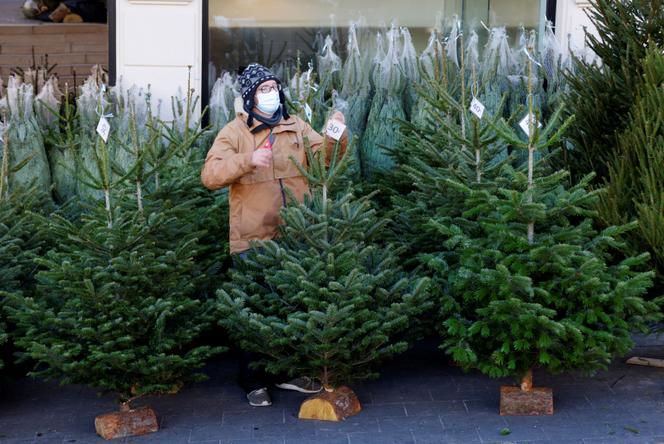


Le Monde journalist Nabil Wakim, who hosts the Chaleur Humaine podcast on climate solutions (in French), answers questions from readers on the challenges of the climate crisis.
A reader asked: "Is cutting fir trees and selling them bad for the climate? I've been looking for a brochure on the subject but couldn't find one. Would you have an answer on this? Thank you!" – Audrey
Nabil Wakim's answer: The carbon impact of Christmas trees is difficult to quantify precisely, but it's minuscule compared to the overall carbon footprint of our end-of-year festivities. Transport and especially gift purchases have a much higher footprint.
What do we know about the carbon footprint of Christmas trees?
Natural or plastic tree? Several North American studies dating back a few years ago made a comparative carbon analysis between a natural tree and a plastic one. The results are clear: A natural tree's carbon footprint is better than its plastic equivalent, for the first 20 years of use.
But what about the fir tree itself? These trees are produced on plots of land used for this purpose (we don't go to Scandinavia to find them in protected forests, for example) so their capacity to store carbon is fairly low. L'ADEME, the French Agency for Ecological Transition, has explained that trees account for 1% of the carbon footprint of Christmas festivities: a minimal impact.
How to limit the carbon footprint of your Christmas tree?
The ADEME recommends choosing a local fir tree – scented spruce or Nordmann – and choosing a label with a low environmental impact. If you have a garden, you can buy a potted tree and replant it quickly. Another important point is that the carbon impact of a Christmas tree is much lower if it is properly recycled rather than burned. Tree collections are often organized from the beginning of January to compost or shred trees for use as mulch in gardens.
A last option is to opt for a reusable wooden tree (and keep it for several years, otherwise it doesn't really count).
What really pollutes at Christmas?
Admittedly, no fewer than 6 million fir trees are sold in France every year, but as the ADEME has explained, they are not the biggest source of greenhouse gas emissions. Instead, the main culprit is gifts, which make up 52% of emissions related to the holidays – 300 million gifts are given each year. Next comes transportation (25% of emissions) – particularly car travel, which accounts for almost all transport – and food (15%). The remainder is made up of waste and Christmas decorations, including Christmas trees. In other words, according to the ADEME, to reduce the carbon impact of your festive season, opt for sustainable, second-hand gifts and limit the use of plastic. We could add that this is an opportunity to offer non-material gifts, such as tickets to shows (I don't dare write "or a subscription to Le Monde!").
